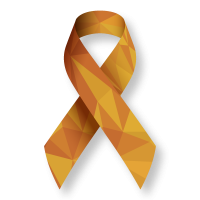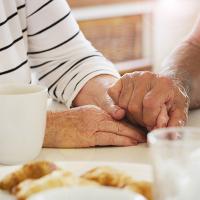Good nutrition is essential for our overall health and may also play a role in reducing symptoms associated with common bladder disorders. In this article we focus on food and beverage choices and discuss how we can actively manage our lifestyle to maintain and improve our bladder health.
A quick note before we begin. It’s important to keep in mind that a single set of recommendations cannot apply to all types of bladder disorder. For example, avoiding foods such as citrus fruit and tomatoes might help an individual to ease symptoms associated with an overactive bladder but would not change their risk of disorders such as bladder infections and bladder cancer.
- What Types of Disorders Commonly Affect the Bladder?
- How Common Is Bladder Cancer?
- How To Improve Bladder Health
- Foods for Bladder Health
- Food and Cancer Prevention
- Food and Bladder Cancer
- What Are the Symptoms of Bladder Cancer?
- How Is Bladder Cancer Detected?
What Types of Disorders Commonly Affect the Bladder?
Several conditions may commonly affect the bladder, including:
- Bladder infections: Also referred to as urinary tract infections or ‘UTIs’, bladder infections occur when bacteria enter the urethra (the duct through which urine leaves the bladder), multiply, and travel up to the bladder. Associated symptoms may include a need to urinate frequently, a painful or burning sensation when passing urine, urine with a strong odor or cloudy appearance, haematuria (blood in the urine), and pain or pressure in the pelvic area.
- Overactive bladder (OAB): Strictly speaking, OAB is the name used for a set of urinary symptoms rather than being a disease in itself. The most common OAB symptom is a sudden, urgent need to urinate; in some people, the sudden urge may be accompanied by urine leakage (referred to as ‘urgency urinary incontinence’). Affected individuals may also need to pass urine frequently, both during the day and night.
- Stress urinary incontinence (SUI): Individuals with SUI leak urine when the bladder and urethra are placed under sudden physical pressure. This is most commonly caused by laughing, sneezing, coughing, and certain exercises (e.g., jumping, skipping). SUI is particularly common in women.
- Interstitial cystitis: Individuals with interstitial cystitis (also known as bladder pain syndrome) experience persistent pain and pressure in the bladder area, which may be accompanied by urinary symptoms such as increased frequency and urgency. What causes interstitial cystitis is uncertain, but it has been suggested that nerve changes, immune system effects and/or defects in the bladder lining may play a role.
- Bladder cancer: Bladder cancer occurs when the cells making up the bladder begin to grow in an abnormal, uncontrolled way. The abnormal cells cluster together to form a tumour, which over time may spread further within the bladder and to other parts of the body. Early symptoms of bladder cancer may include blood in the urine (i.e., haematuria), changes in urinary habits (e.g., increased frequency and urgency), and urinary irritation (e.g., pain or a burning sensation when passing urine).
For more information on these common conditions, please refer to the Urology Care Foundation (American Urology Association) website.
How Common Is Bladder Cancer?
Globally, approximately 1 in 100 men and 1 in 400 women will develop bladder cancer at some stage during their life. Bladder cancer rates vary considerably by region, being highest in Europe and North America, and in most regions bladder cancer is 3 to 4 times more common in men than in women. In the United States, the lifetime risk of bladder cancer is approximately 1 in 25 for men and 1 in 100 for women.1,2
How To Improve Bladder Health
Many factors related to bladder care, lifestyle, and nutrition can help to maintain and improve bladder health, including:
- Bladder related:
- Empty your bladder regularly and whenever needed (avoid ‘holding on’). A normally functioning bladder needs to void every 3 to 4 hours.
- Do pelvic floor exercises
- Try to avoid conditions that favour bacterial growth (e.g., wipe front to back, urinate after sex, use cotton underwear, avoid tight fitting clothes)
- Lifestyle related:
- Keep body weight at a healthy level
- Exercise regularly
- Stop smoking
- Avoid constipation (e.g., by ensuring fluid and fiber intake are adequate and exercising regularly)
- Food and beverage related:
- Drink adequate amounts of fluids, especially water
- Eat a healthy diet with plentiful fruit and vegetables
- Limit caffeine and alcohol intake

Foods for Bladder Health
Nutrition is a complex topic, and there is no ‘one size fits all’ bladder diet. However, several foods are recognised as being bladder irritants and others may have a soothing effect on sensitive bladders. It is helpful to be aware of these foods, but keep in mind that the irritating or soothing effects they may have are mainly relevant to conditions such as OAB and interstitial cystitis.
What are foods that irritate the bladder?
Foods and drinks that have been associated with bladder irritation include tomatoes and tomato juice, vinegar, chili and spicy foods, chocolate, sugar and other sweeteners (e.g., saccharin, aspartame, corn sweeteners, honey, fructose, sucrose, lactose), caffeine, carbonated beverages, alcohol, and some fruits and fruit juices (e.g., apples, citrus fruit, pineapple, plums, grapes).
Note that if bladder symptoms are related to a dietary component, an elimination diet may help to identify the problematic food or drink. This involves adhering to a diet that eliminates common bladder irritants – if a dietary component has been contributing, marked improvement in symptoms is expected within approximately 10 days. Foods can then be slowly added back into the diet one at a time – if symptoms return, this enables the specific irritant to be identified.
What foods calm the bladder?
The American Urological Association also recognises some foods as potentially having a calming effect on sensitive bladders. These foods include pears, bananas, green beans, squash, potatoes, lean proteins, whole grains, nuts, bread, and eggs.
Remember that these are general guidelines and mainly apply to sensitive bladders. In the following section we will discuss what is known regarding food and cancer/ bladder cancer. For specific guidelines related to other bladder conditions you may wish to refer to American Urological Association resources available at www.urologyhealth.org. If you are concerned about your bladder symptoms, seek advice from your doctor.
Food and Cancer Prevention
The American Cancer Society’s general guidelines for cancer prevention recommend that all ages should follow a healthy eating pattern. Their suggestion:
- Include:
- Foods high in nutrients, in amounts that maintain a healthy body weight
- A variety of vegetables
- Fruits in a range of colours
- Whole grains
- Limit:
- Red and processed meats
- Sugary drinks
- Highly processed foods and refined grain products
- Exclude:
- Alcohol (if alcohol is not excluded, it should be limited to no more than 1 standard drink in women and 2 standard drinks in men daily)

Food and Bladder Cancer
Given the lining of the bladder may be exposed to dietary carcinogens excreted in the urine, a number of studies have investigated the impact of dietary components on bladder cancer specifically. While some dietary components may be carcinogenic, findings suggest others can have a protective effect against bladder cancer. The main points of knowledge at this stage, bearing in mind this is an ongoing area of research:
- The combined consumption of vegetables and fruit may decrease bladder cancer risk.
- Vegetables and fruit contain several substances that may protect against cancer, such as antioxidants, minerals, fiber, and organic compounds (phenols, flavonoids, and phytochemicals). It is likely that any protective effect against bladder cancer is due to a combination of effects, rather than a single substance.
- American Cancer Society guidelines for cancer risk reduction recommend a daily intake of at least 2.5 to 3 cups of vegetables and 1.5 to 2 cups of fruit (in proportion to an individual’s energy requirements).
- The findings of some studies indicate that certain compounds present in tea may reduce the risk of bladder cancer. It has been suggested that the anti-oxidative and anti-proliferative effects of polyphenol compounds in particular may help to inhibit the formation and growth of bladder cancer tumours.
- To date, specific foods or prepared beverages that increase the risk of bladder cancer have not been confirmed. However, there is strong evidence that drinking water containing high levels of arsenic (a recognised carcinogen) can cause bladder cancer. The likelihood of elevated arsenic levels depends on the water source being used, with some localities and water source types (e.g., private wells) carrying a higher risk.

What Are the Symptoms of Bladder Cancer?
- Blood in the urine (‘haematuria’) is the most common symptom of bladder cancer and often the first sign noticed. Depending on the amount of blood present, urine can appear red, pink, or brownish in colour. There may be no associated pain, and long periods of time between episodes of haematuria (weeks or sometimes months).
- Changes in urinary habits and symptoms of urinary irritation, which may include increased frequency and urgency of urination, pain or a burning sensation during urination, and/or difficulty passing urine.
- If bladder cancer has grown in size or spread to other areas of the body, the symptoms experienced will depend on how far and to where the cancer has spread. They may include, for example, lower back pain on one side of the body, appetite and/or weight loss, general weakness, or bone pain.
As haematuria and urinary symptoms are common to several bladder disorders, including bladder cancer, it is important to see your doctor if you are experiencing any of these symptoms so that the cause can be determined.
How Is Bladder Cancer Detected?
Several different diagnostic tests can be used to detect bladder cancer. Often a combination of tests is selected, taking into account an individual patient’s symptoms and risk factors. They may include non-invasive tests carried out on urine samples, cystoscopy (where a thin, flexible tube with a light and camera is used to look inside the bladder), and imaging techniques such as x-ray and ultrasound.
Cxbladder can help rule out bladder cancer
If tests confirm the presence of blood in urine, speak to your doctor and ask if Cxbladder is right for you.
Cxbladder is a non-invasive genomic urine test optimized for the rule out of urothelial bladder cancer, the most common form of the disease. The test analyzes five biomarker genes to quickly and accurately rule out the disease, reducing the need for further invasive procedures.
Learn more about Cxbladder Contact us for more information
References
- Richters A et al. The global burden of urinary bladder cancer: an update. World J Urol 2020;38:1895–1904.
- International Agency for Research on Cancer, Global Cancer Observatory. Bladder. Available at https://gco.iarc.fr/today/data/factsheets/cancers/30-Bladder-fact-sheet.pdf.
General sources
- Abbaoui B, Lucas CR, Riedl KM, et al. Cruciferous Vegetables, Isothiocyanates, and Bladder Cancer Prevention. Mol Nutr Food Res. 2018;62(18):e1800079.
- American Cancer Society. Bladder Cancer Signs and Symptoms.
- American Cancer Society. Tests for Bladder Cancer.
- American Cancer Society. What is Bladder Cancer?
- Fitzgerald, ST. Bladder Health: How to avoid ‘nurse’s bladder’ with basic self-maintenance. American Journal of Nursing. 2005 Oct; 105(10):104.
- The John Hopkins Women’s Center for Pelvic Health. Bladder Irritants.
- Mayo Clinic. Urinary tract infection (UTI).
- MSD Manual. Urine, Blood In.
- National Institute on Aging. 13 Tips to Keep Your Bladder Healthy.
- Urology Care Foundation. Urology A-Z.
- Urology Care Foundation. 10 Foods Your Bladder Will Fall in Love With.
- Rock CL, Thomson C, Gansler T, et al. American Cancer Society guideline for diet and physical activity for cancer prevention. CA Cancer J Clin. 2020;70(4):245-271.
- World Cancer Research Fund International/American Institute for Cancer Research. Continuous Update Project Report: Diet, Nutrition, Physical Activity and Bladder Cancer. 2015.






